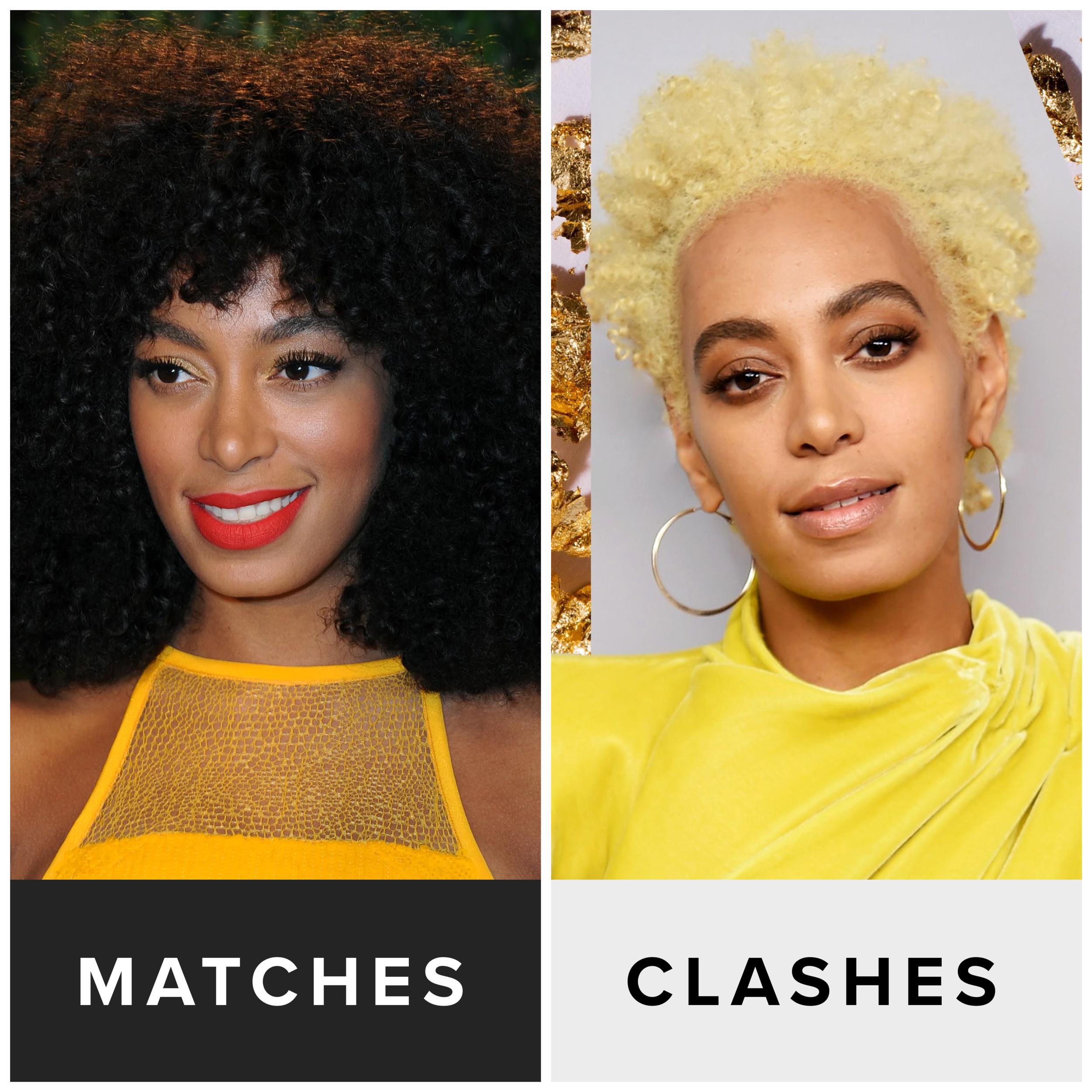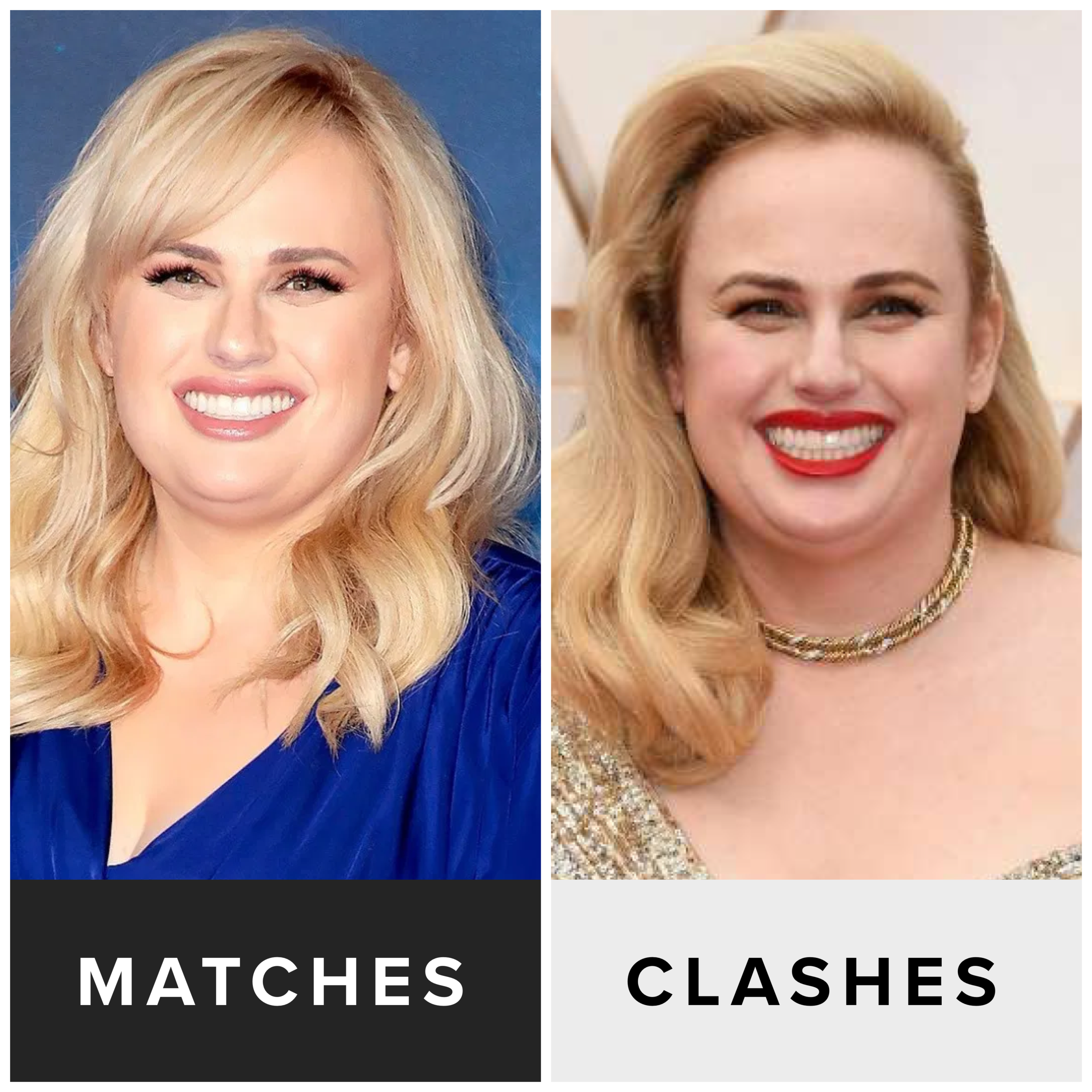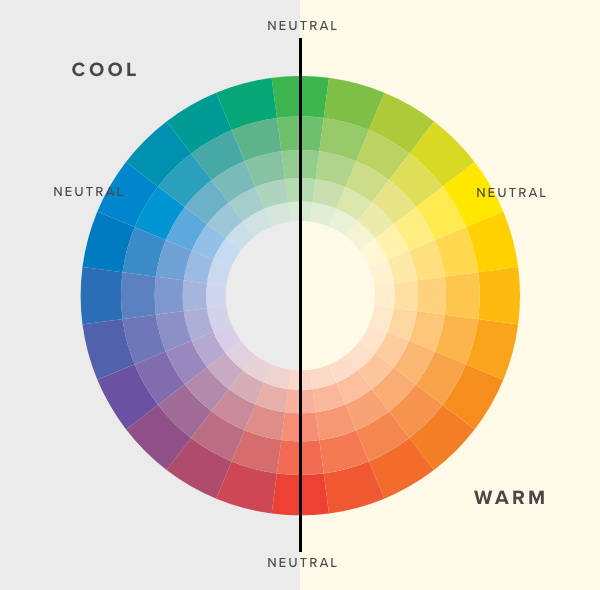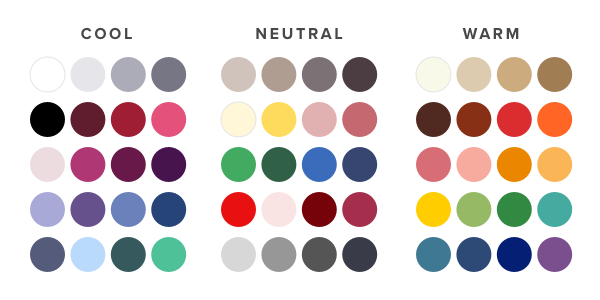How Do You Know What Your Undertones Are
How-to Find your Undertone (and Overtone) Once and for All

Ever notice that some colors just seem to make you glow?
You might know that you look great in blue because it matches your eyes or think that you "can't" wear red because you're a redhead. But have you noticed that there are certain blues that actually wash you out? Or a shade of red lipstick that seems to lift your whole face?
That's the weird and magical power of color.
Not all blues and reds (or greens, or yellows, etc) are created equally. We all have our best blues or our best reds. The differences can be subtle if you don't know what you're looking for.
Wearing your best colors can save you time, money, and energy, and make you look healthier, younger, and more vibrant. Learn about all the benefits of Color Analysis here.
"Which would you rather hear: 'You look stunning' or 'I love your shirt'?"

While I offer done-for-you Color Analysis services, I know not everyone has the budget to hire a professional. Don't fret! You can get a pretty good idea of your best colors if you spend some time analyzing yourself. In this post I'm going to show you exactly the steps to take the first steps to figuring out your best colors.
Where to start?
While there are several factors that go into which colors look best on you, the best place to start is with your undertone (and overtone). Figuring out this piece alone means you can eliminate almost half of the colors, making shopping twice as easy.
In Part 1 of this 2 part series on Color Analysis (sometimes called "Seasonal Color Analysis"), I'm going to explain "overtone vs undertone", give you 5 ways to determine your undertone, and what to do if you're truly "neutral."
In Part 2, I'll give you the run-down on the other 3 important aspects of your personal color analysis: depth, chroma, and contrast level, and show you how to determine yours.
If you're new here, I'm Missy of Simplified Wardrobe, an Ethical Personal Stylist & Capsule Wardrobe Curator. I help ambitious, eco-conscious womxn who want to look great, feel confident, and simplify their lives.
Find more information about personal style, capsule wardrobes, and color analysis over on Instagram . You can also download my free 10-page Guide to Defining your Personal Style.
Determining your undertone
What is an undertone, anyway?

Color wheel showing cool, warm, and neutral undertone colors for Seasonal Color Analysis.
As the name suggests, your undertone is the color that is under the skin (not to be confused with overtones). Everyone's undertone sits somewhere on the spectrum of cool (more blue) to warm (more yellow.) I say it's a spectrum because it is—some people are obviously richly warm and some are very icy cool, but most are somewhere in the middle, and a few are true neutral, a perfect balance of warm and cool.
Once you know your undertone, you can eliminate any colors that have the opposite undertone. You can see where all the colors in the spectrum sit on the color wheel in this graphic. So, if you're warm, you can eliminate all the colors on the cool side, and if you're cool, eliminate warm colors.
Note: True red, green, blue, and yellow are technically universal or "neutral" colors.
Overtone Vs. Undertone
It seems pretty straightforward, yet people often struggle with undertone. I get it— sometimes it's obvious, but other times it can be pretty tricky, especially for those with very fair, olive, yellow, or black skin tones. A lot of this difficulty can be explained by the confusion around overtones. Before we go any farther, let's break down the important difference between undertone and overtone using the graphic below.

A visual explanation of overtone vs. undertone, and how the two work together to create many different skin tones.
At the top, you can see a gradient from warm (yellow) through neutral (red) to cool (blue.) You might think that neutral should be green because it's in between yellow and blue, but so is red. Go back to the color wheel. You'll see that red is also directly between blue and yellow; it's just that you have to go the other way around the color wheel (see color wheel above to see what I mean). The reason we use red and not green here is because no one has a green undertone. (If right now you're thinking that olive skin has a green undertone, just wait. I'll explain olive skin in a moment.)
Now, below the color gradient, you'll see 4 bars of common skin overtones overlaid on top of the undertone gradient. You can see that someone with more pinky overtones and warm undertones results in a peachy skin tone, like Blake Lively, whereas someone with pink overtones and cool undertones results in a more porcelain skin tone, like Emma Stone or Lucy Liu. Over a neutral undertone, you get a more pure pink, like Madelaine Petsch.
Similarly, if you take a more yellow skin overtone and overlay it on a warm undertone, you get a very tawny skin tone, like Gwyneth Paltrow, whereas if you overlay a yellowy overtone over a cool undertone, you get what we call an "olive skin tone," like Sarah Jessica Parker (because yellow + blue = green, like an olive.) Yellow overtone over a neutral undertone gives you an orangey tan, like Eva Mendes.
Take a deeper brown skin tone: on top of warm undertones, you get a caramel or honey color, like Mindy Kaling or Naomi Cambell, and over cool skin tones you get more of a chocolate, like Lupito Nyong'o, or taupe, like Zoe Saldana.
Common Misconceptions
Aside from olive skin thought to have either green or warm undertones, there are several other common misconceptions about skin tones. One is that Asians have warm undertones because their skin is often described as "yellow." However, you can see that Asian people can sit anywhere on the spectrum, from Mindy Kaling to Olivia Munn to Lucy Liu. Another is that black or very fair skin is always cool. This graphic shows you that people of any overtone (white, yellow, pink, brown, black) can have either cool or warm undertones.
5 methods to determine your undertone:
1. The Vein Test

This is one of the easiest tests to conduct on yourself, though it's not always easy to interpret. You just look at the veins on your wrists or under your eyes to see if they appear to be more purple/blue (cool) or green (warm).
2. Natural Hair Tone

This can be tricky for those of us who haven't seen our natural hair color in awhile (this was me for years). If that's you, look at just your roots and brows, or try to find photos of yourself with natural hair around the age of 20 (our hair changes a lot in our early childhood and teens, usually darkening as we get older; on the other hand, hair can start to go gray as we age, so looking back we want to find a good example of our hair at it's "peak" color.)
To determine whether your hair is more cool or more warm, ask yourself: "Does my hair have any "golden" tones? Or would I describe it as "ashy"?" If it has warmth, your undertones are likely warm, but if it's more ashy, then you're probably cool. (Jet black and platinum blonde are usually cool.)
Note: Red hair is tricky! You'd think that orange being a warm color that redheads would have warm undertones, but that's not always the case. If your hair is bright orange or strawberry blonde, you're probably warm. If it's more auburn, you might be cool. Redheads should not rely on the hair color test alone.
3. Gold or Silver

Hold up gold and silver jewelry next to your face. Which one makes you look brighter and healthier and which one makes your skin more yellow, red, uneven, or gray? If gold jewelry gives you a lift, you're warm. If silver is better, you're cool.
4. Best Neutrals

Compare warm and cool neutrals to your skin, wearing no makeup. Test white versus cream, gray versus camel, and black versus brown. If you looked best in white, gray, and black, you're cool. If you looked best in cream, camel, and brown, then you're warm.
Note: if your hair is colored, cover it with a white towel or sheet.
5. Eyes

Eye color alone doesn't have much bearing on whether you're cool or warm. Blue eyes don't automatically mean cool just as brown eyes don't automatically mean warm. What you want to look for is the quality of the color and the features of the eyes. If you have brown or golden flecks or starbursts, that's an indicator that you have some warm undertones. If your eyes appear smoky, icy, or like shattered glass that indicates cool coloring. If the tone of the eyes could be described as "golden," "turquoise," or "honey," that often means warm. If the tone could be described as "icy," "chocolate," or "grayish", that usually means cool.
What about neutral?
Like I said, it's all a spectrum. We're individuals, and our coloring is made up of a lot of different factors, some warm and some cool. Some people are truly right in the middle. If you struggled with the above tests, either unable to determine cool or warm or if you determined warm in half of them and cool in the others, you might be truly neutral or close to neutral on the spectrum. If that's you, stick to colors that are neither overly warm nor overly cool, but somewhere in the middle. More than likely, you're not quite dead center, but lean slightly to one side or the other, which means you can wear colors that are in that half of the spectrum, but will look best if you stick closer to neutral. For example, if you decide you lean warm but are close to neutral, you can wear anything from warm to neutral, but will look best in warm tones that are not overly warm and have some neutral base to them.
See this graphic for examples of colors that are cool, neutral, and warm.

Example palettes of colors with cool, neutral, and warm undertones.
Read Next

If you've ever stood in front of multiple options feeling unable to make a decision, you're familiar with decision fatigue. Here are 5 ways you can help prevent or reduce decision fatigue in your life so that you can make choices more efficiently that are in line with your values.

Great professional headshots are a crucial element of personal branding. If they're missing, outdated, or just downright unprofessional, it's hurting your credibility. I'm going to explain why headshots are so important and give you my top tips—including what to wear, good backgrounds, what to do with your hands, and more!—for taking professional headshots that boost your personal brand and build authority.

You're finally ready to give this whole Capsule Wardrobe thing a try. But, wait…how exactly do you get started? I'll walk you through my simple 4-step process that I use with my clients to build their perfect Capsule Wardrobes.

We've all been on about 1000 Zoom calls by now. At this point, you probably have the tech down, but is your Zoom look as dialed in? Love 'em or hate 'em, conference calls probably aren't going away any time soon. Here are some tips that are going to take your Zoom looks to the next level.

Curious about capsule wardrobes, but you don't want to give up color? In this video, I give you 5 ways to create capsule wardrobe color palettes that show off your personal style and are anything but boring!

Look your best by combining your colors into patterns and learning the best contrast, scale, and quality of patterns that look best with your natural coloring, facial features, and body.

Is your closet chaotic but the sound of a full-blown closet edit sounds exhausting? Here are 5 things you can detox from your closet right now.

Now that you know your undertone, here's how to determine the right level of depth, saturation, and contrast to look for so that your clothes don't overpower you or wash you out.

Ever wonder what hair color will look best on you? In this comprehensive guide, I walk you through everything from skin undertone vs overtone, how to find yours, and what to do if you're neutral.

The term "Color Blocking" simply means wearing several solid colored items in different hues. It can be just 2 colors or a few. It might seem scary to try, but it's actually pretty simple if you follow a few guidelines.
How Do You Know What Your Undertones Are
Source: https://www.simplifiedwardrobe.com/blog/how-to-do-a-color-self-analysis
0 Response to "How Do You Know What Your Undertones Are"
Post a Comment